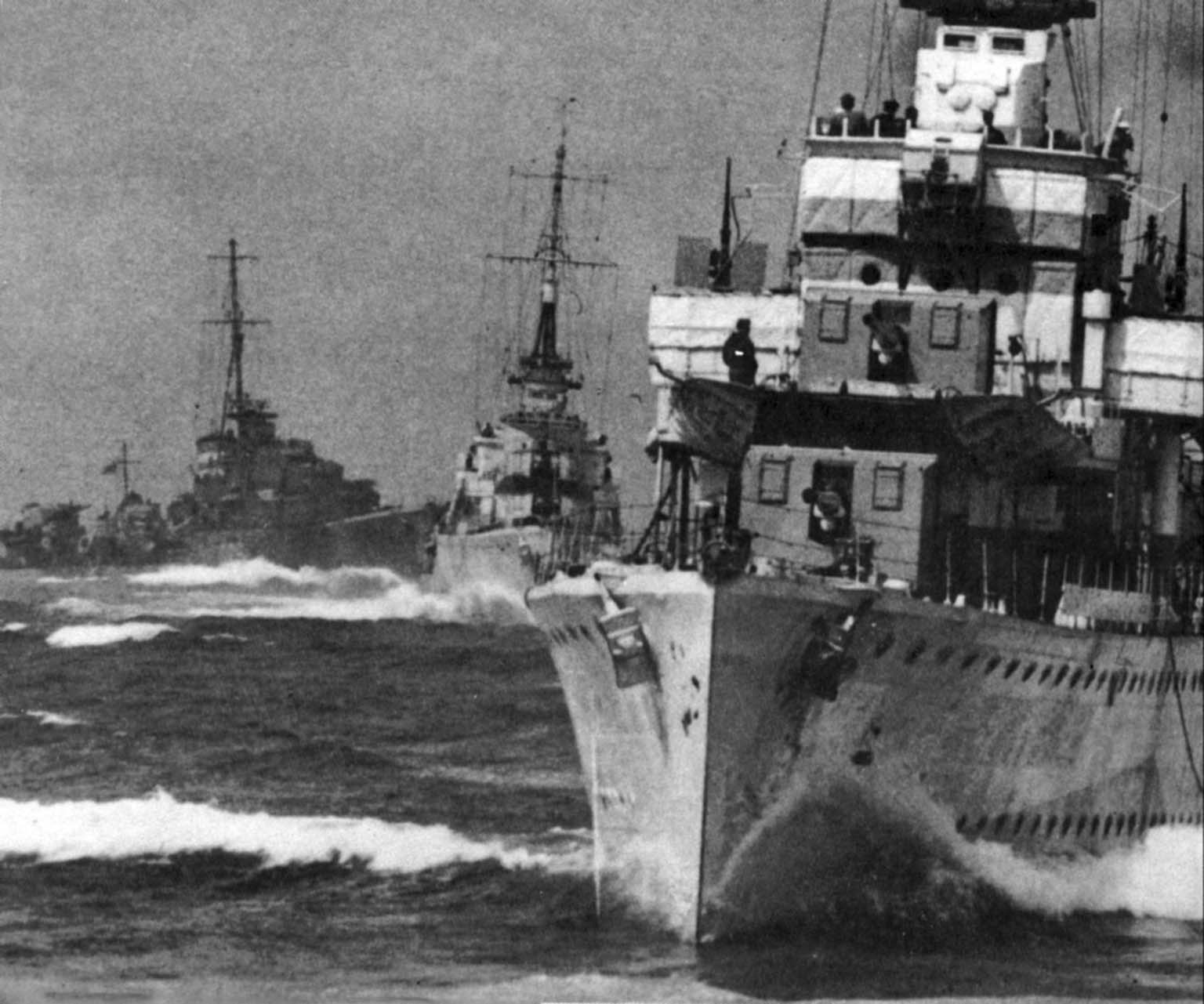British destroyers go to sea from Scapa Flow to accompany the sea convoy of PQ-17. The first-ever is English destroyer is Fury (HMS Fury). Battle of Atlantic, Second World War.
Location: Skapa Flow, Scotland, UK
Time when the photo was taken: June 1942
PQ-17:
PQ-17 was a World War II Arctic convoy that became known for its heavy losses. PQ-17 was sent to the USSR on June 27, 1942 with strategic cargo and military equipment from the USA, Canada and Great Britain. It consisted of 35 cargo ships. The convoy was covered by several groups of Allied ships. Direct cover for the convoy was provided by British destroyers, air defense ships, minesweepers and armed trawlers under the command of Commander John Broome. Near the convoy there was also a formation of British and American cruisers under the command of Rear Admiral Louis Hamilton. Long-range cover of the convoy was provided by a combination of heavy British and American ships, which included an aircraft carrier and two battleships. The German Navy carried out Operation Horseback (German: Rösselsprung), the purpose of which was to destroy the convoy. It was planned to launch a joint attack on convoy PQ-17 by surface ships, submarines and aircraft.
The cruiser group accompanying the convoy under the command of Admiral Hamilton was supposed to leave the convoy at the longitude of Bear Island, however, covering the convoy, it went further. As a result of the intelligence received, on July 4, 1942, the Admiralty received a personal order from the First Sea Lord Dudley Pound: “The convoy should disperse!” The cruising group received an order to retreat to the west due to fear of an attack by a German formation headed to sea led by the battleship Tirpitz.
Having received ambiguous orders and thinking that the cruiser group was leaving to fight German surface ships, Hamilton approved the proposal of the convoy covering commander Broome to join the convoy destroyers to the cruiser force. As it turned out later, the information about the release of the German battleship turned out to be inaccurate. The scattered ships of the convoy, one by one breaking through to Arkhangelsk, accompanied by the remaining ships of the convoy, in polar day conditions became easy prey for German submarines and aircraft. As a result, 22 transports and 2 auxiliary ships from the convoy were sunk.
